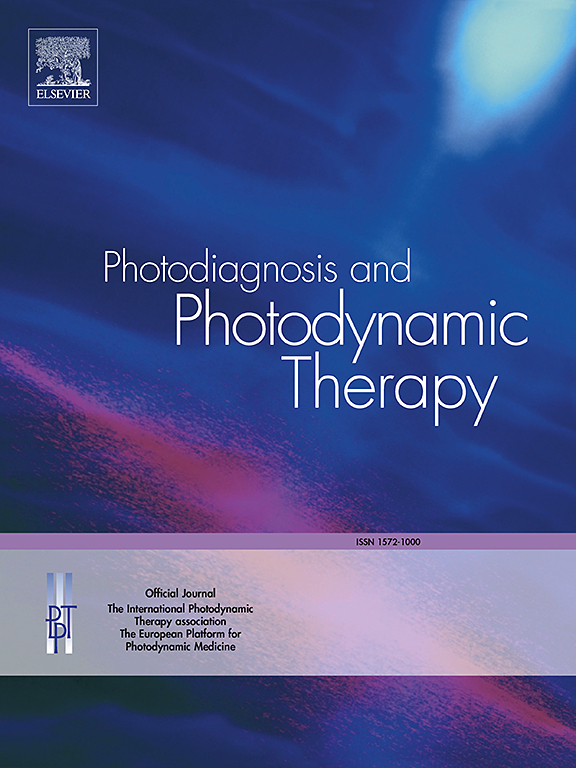利用前牙生物膜的生物荧光进行有效的牙龈健康筛查。
IF 3.1
3区 医学
Q2 ONCOLOGY
引用次数: 0
摘要
目的:应用定量光诱导荧光(Quantitative Light-induced Fluorescence, QLF)技术评价前牙生物膜的生物荧光特性,以筛选牙龈健康状况。方法:55例(n=55)年龄≥20岁的牙龈炎患者纳入本研究。使用基于QLF技术的Qraycam设备获得上、下前牙的荧光图像。为了评估生物膜荧光沉积水平,计算了使用红色生物荧光检测到的牙齿生物膜面积相对于前牙总表面积的百分比。评估牙龈健康状况,评估Silness-Lӧe菌斑指数(PI)、Lӧe牙龈丝滑指数(GI)和探诊出血指数(BOP)。采用Pearson相关分析和logistic回归分析检验生物膜生物荧光与牙龈健康状况的关系。结果:荧光生物膜面积越大,GI值和BOP值越高(p)。结论:QLF技术评价前牙生物膜的生物荧光是筛查牙龈健康状况和识别牙龈炎高危人群的有效指标。本文章由计算机程序翻译,如有差异,请以英文原文为准。
Efficient gingival health screening using biofluorescence of anterior dental biofilms
Purpose
In study, we aimed to evaluate the biofluorescence of anterior dental biofilms using Quantitative Light-induced Fluorescence (QLF) technology to screen for gingival health.
Methods
Fifty-five (n = 55) adult participants aged ≥ 20 years with gingivitis were included in this study. Fluorescence images of the upper and lower anterior teeth were obtained using Qraycam Pro, a device based on the QLF technology. To evaluate the biofilm fluorescence deposition level, the percentage of the dental biofilm area detected using red biofluorescence was calculated relative to the total surface area of the anterior teeth. To evaluate the gingival health status, the Silness-Lӧe plaque index (PI), Lӧe -Silness gingival index (GI), and bleeding-on-probing index (BOP) were assessed. Pearson's correlation and logistic regression analyses were performed to examine the relationship between biofilm biofluorescence and the gingival health status.
Results
The group with the larger fluorescent biofilm area exhibited significantly higher GI and BOP values (p < 0.05) than the group with the smaller fluorescent biofilm area. Furthermore, significant correlations were found between the fluorescent biofilm area and GI, BOP, and PI (r = 0.422, r = 0.376, and r = 0.499, respectively; p < 0.05). Logistic regression analysis adjusted for sociodemographic variables, smoking, and alcohol consumption showed that the odds ratio for moderate gingivitis in the group with a larger fluorescent biofilm area was 6.07 compared with that in the group with a smaller area (p < 0.05).
Conclusion
Evaluating the biofluorescence of anterior dental biofilms using QLF technology is an effective indicator for screening gingival health and identifying individuals at a high risk for gingivitis.
求助全文
通过发布文献求助,成功后即可免费获取论文全文。
去求助
来源期刊

Photodiagnosis and Photodynamic Therapy
ONCOLOGY-
CiteScore
5.80
自引率
24.20%
发文量
509
审稿时长
50 days
期刊介绍:
Photodiagnosis and Photodynamic Therapy is an international journal for the dissemination of scientific knowledge and clinical developments of Photodiagnosis and Photodynamic Therapy in all medical specialties. The journal publishes original articles, review articles, case presentations, "how-to-do-it" articles, Letters to the Editor, short communications and relevant images with short descriptions. All submitted material is subject to a strict peer-review process.
 求助内容:
求助内容: 应助结果提醒方式:
应助结果提醒方式:


